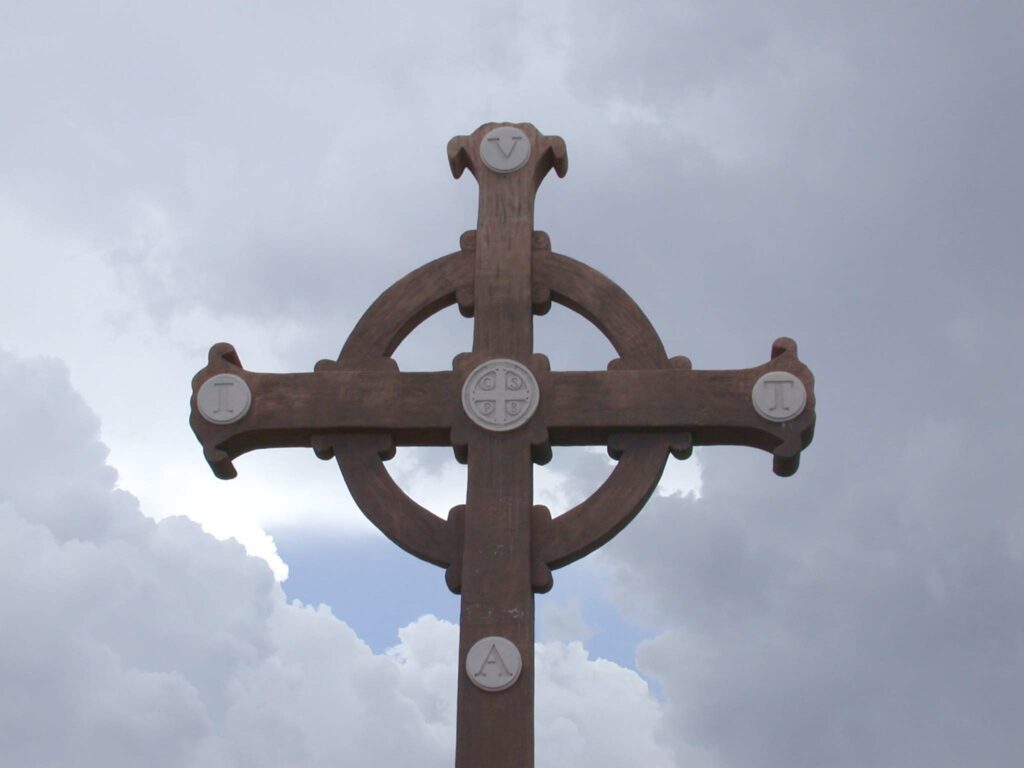Benedictine Oblates of WCCM

Monastics have organized their lives with an utterly clear priority. In their conversion they turn from themselves to their brethren in the community, to Christ in prayer and to God in Christ. This is the clear Benedictine tradition and when it is fully alive in the hearts of men and women, it has the power to convert, to turn to Christ, all who come under its influence.
– Fr. John Main OSB, "Letters from the Heart"

What is an Oblate?
Historically, Oblates have been around since the time of St. Benedict, in the sixth century. The term “oblate” comes from Latin, meaning, simply, “to offer”. In the beginning, Oblates were children offered to the monastery by their parents. Over time, the term “Oblate” came to mean lay people outside the monastic enclosure who were connected with a particular monastery, and deeply informed by the monastic way of life.
Benedictine Oblates within WCCM
WCCM forms a “monastery without walls”, so our Oblation is not to a particular physical monastery, but is a unique form of participation in the community that is formed by the practice of Christian Meditation. This participation takes as its guide the Rule of Benedict, the oldest monastic rule, and the tradition of our founder, Fr. John Main, OSB. Since the days of our founding, Oblates have offered within the larger WCCM community, a witness to WCCM’s place in the Benedictine universe.
Oblates of WCCM continue their twice-daily commitment to Christian meditation, as well as practice lectio divina, read the Rule of Benedict, and say some part of the Divine Office as their circumstances permit. Becoming familiar with the writings of Fr. John Main, OSB, and Fr. Laurence Freeman, OSB, is also central to the path.
Experience of community characterizes the Oblate life. First, we experience how the practice of meditation creates community. Secondly, Oblates experience a sense of calling towards their monastically-inspired community-within-community, sharing mutual support, encouragement and spiritual friendship with others on the Oblate path. Thirdly, Oblates give back to WCCM by serving its mission to teach Christian Meditation in the spirit of unity of all.
Oblation within WCCM is a commitment to ever-deepening discernment of life in Christ — through the practice of Christian Meditation as taught by Fr. John Main and guided by the Benedictine wisdom tradition. The Oblate path is not highly programmatic, but an enhancement of the contemplative and creative rhythms which meditation fosters.
How US Oblates are Organized
Internationally, we’re part of the global community of Oblates of WCCM, directed today by Fr. Laurence Freeman. And, in the United States, we’re also a small community of Oblates spread out across the nation. Some of our US Oblates are fortunate to live in one of two areas (Houston or Jacksonville), close enough to each other to come together monthly, for prayer and mutual support. These regular Oblate gatherings are called local cell meetings.
Throughout the rest of the US, many Oblates are more or less solitary. Therefore, we are grateful to be able to create community through the inspired use of the Internet. We connect via weekly meditation groups, monthly cell meetings, and mentoring. Through this technology we are also able to engage with WCCM Oblates in other countries. With what Fr. Laurence calls, “the sacramental use of the Internet”, our Oblate community is energizing and expanding both nationally and internationally.
Cell Meetings
Cell meeting formats can vary, but a typical cell meeting puts at its heart a period of meditation, and includes saying a part of the Divine Office, reading a portion of the Rule of Benedict, and the practice of lectio divina.
Periods of “sharing”, in the spirit of lectio, are also extremely important. This reflective sharing of each Oblate’s attentive response to the Rule, or to Scripture, allows Oblates to experience the power of wisdom in community. This experience is fostered by speaking authentically and being deeply and fully listened to. Thus, this sharing, which is actually a kind of mutual self-giving, is both supportive and transformative. This experience is something that those of us who are Oblates have to offer each other — this kind of sharing is, in fact, an oblation to each other.
Discerning your Call with the Help of a Mentor
Each newcomer to the Oblate path is paired with an experienced Oblate called a mentor, to assist in the process of discernment that is central to our character. This can foster a mutual spiritual friendship, as well as the greater dissemination of wisdom in our community.
First Steps to Oblation
- Be a twice-daily practitioner, for some time, of Christian meditation as taught by Fr. John Main. Consider if you are discerning the personal transformation brought about by this practice, and a call to deepen that transformation through the Benedictine wisdom tradition.
- Get in touch with the US Oblate Coordinator, Mary Kelly Robison, and make an expression of your interest in the Oblate path. Also, talk to any Oblates that you might know, and attend a cell meeting if possible.
- After an initial encouraging conversation with the US Oblate Coordinator, expect to take about six weeks to consider if this path if for you. During this time, read the article “Monastics in the World”, by Fr. Laurence Freeman, and the book Community of Love, by Fr. John Main. It’s also a good idea to become familiar with “The Rule of Benedict” through Joan Chittister’s commentary, A Spirituality for the 21st Century: The Rule of St. Benedict. (This will be the beginning of an ongoing engagement with these and other writings, if you continue on the Oblate path.)
Stages on the Oblate Path
- Postulancy: During this period, which lasts at least six months, you will be paired with an experienced Oblate as your mentor. You will meet with or talk with your mentor every six to eight weeks as you become familiar with Oblation within WCCM. You and your mentor mutually discern your readiness for the next stage of the Oblate path.
- Novitiate: During this period, which lasts at least a year, you will become familiar with the ancient monastic practice of lectio divina, “The Rule of Benedict”, and the precepts of stability, conversatio morum, and obedience. You will be helped to use the Breviary if you are not already accustomed to it. You will continue to speak with your mentor every six to eight weeks, in an experience of deepening spiritual friendship, and to discern your readiness for final Oblation.
- Final Oblation: As part of your permanent commitment to the community, you will discern how you can be of service to the community, especially to pass on the work of Christian Meditation. If you don’t already have a Christian Meditation group in your area, this would be a good time to start one. You will also continue to explore expressions of community with other Oblates such as national Oblate retreats and online Oblate meditation sessions and cell meetings
WCCM-USA National Oblate Coordinator


